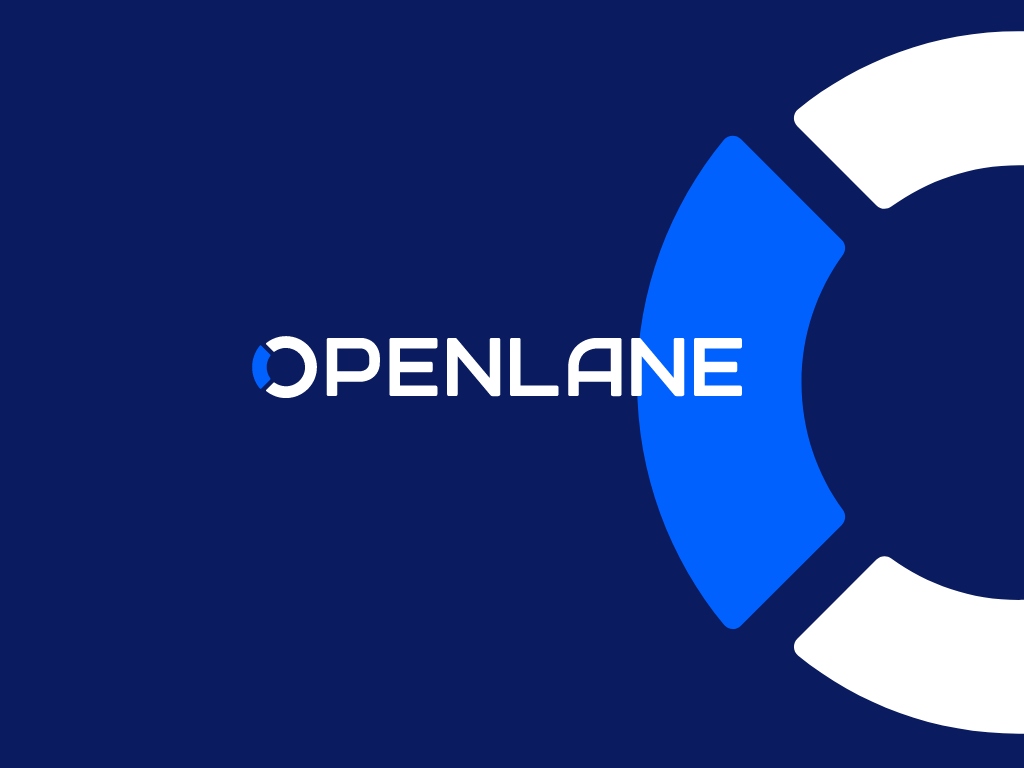Hallett: Our goal is simple. We want BacklotCars to be the No. 1 digital dealer-to-dealer marketplace in the U.S.
By: Joe Overby
With the combination of its BacklotCars and TradeRev products into one marketplace, KAR Global leadership has its eyes on the No. 1 spot in the U.S. digital dealer-to-dealer space.
The combination of the marketplaces means that TradeRev’s U.S. dealer customers move to BacklotCars, while Canadian dealers remain on the TradeRev platform exclusively, KAR said.
That migration began on Feb. 1 with the hope of it being completed by the end of March, company leadership said in an earnings call Wednesday, the same day the move was announced.
KAR began piloting the migration in January in three U.S. markets, and was “pleased with the results of the migration and the acceptance of BacklotCars platform by our TradeRev customers in these markets,” chief executive officer Jim Hallett said during the earnings call.
Saying the results of the migration thus far were “very positive,” Hallett said there has been about a five- to seven-day “learning curve” for dealers moving from TradeRev to BacklotCars. At first, there was a slight volume dip as the customer migration began.
But in the second week of the transition, volumes began to pick up for dealers who had migrated in that initial wave.
The company believes it can “maximize liquidity” by having a combined D2D marketplace, Hallett said. The BacklotCars inspection cars can help reduce inspection costs and offer more consistent inspection reports, he said.
“And most important, we believe the price realization on the BacklotCars platform in the U.S. outperforms the competition in the U.S. market,” Hallett said.
After detailing some initial findings, he added: “We believe that BacklotCars is the fastest-growing dealer-to-dealer platform in the U.S. market. Our goal is simple. We want BacklotCars to be the No. 1 digital dealer-to-dealer marketplace in the U.S.”
In a follow-up interview later that day, Auto Remarketing asked Hallett what it will take for that to happen.
Reaching the top
He said it starts with getting existing dealers to conduct more transactions on BacklotCars and introducing he platform to new sellers.
“We’ve done a very good job of migrating these dealers over. The experience has been very good so far … I don’t think we’ve had any dealer say no to us yet, that we went to convert off the TradeRev platform,” Hallett said.
“I think it’s just now the exposure. More people need to hear about Backlot. More dealers need to understand the value proposition and how the platform works,” he said. “We need to do a little bit of hand-holding and really get the dealer comfortable with the platform and the ease of use in the platform.
“But then, get them to transact right away … It’s one thing to sign up on the platform. It’s one thing to introduce it,” Hallett said. “But the other thing is to really get them to transact.”
Having watched them as a once-competitor, Hallett said the Backlot team did a good job of signing dealers up and introducing them to the technology, but also in showing those dealers the ropes and guiding them to make transactions.
Why platforms made sense for each country
So, why TradeRev in Canada and BacklotCars in the U.S.? KAR president Peter Kelly addressed that in the follow-up interview.
The decision for Canada was “fairly easy,” as TradeRev is the leading platform there and BacklotCars doesn’t have a Canadian presence, Kelly said.
And while the company continues to make the Canadian market a point of emphasis, this move was largely about KAR shoring up its U.S. competitive position.
Kelly said KAR considered several data sets from both the TradeRev and Backlot systems.
“We looked at, obviously the volumes being transacted, the number of active sellers, the number of active buyers. Then we went to a level deeper than that. We looked at how well were the customers performing, conversion rates, price attainments,” he said.
“We surveyed the dealers fairly extensively, both on the buy side and the sell side to assess their level of satisfaction with different aspects of both platforms. And based on all of that, we felt with conviction, that the right strategy was to do a migration and consolidation of the volume (to) the Backlot platform,” Kelly said.
“We felt it offered some key advantages to the dealers in terms of the outcomes it could get for them both on the sell side and buy side, and we then decided, ‘well, let’s see how quickly we can get this done,’ and we set an aggressive timeline to get the migration done and we’re tracking at or ahead of that timeline. We’re feeling good about where we stand at this point, less than 90 days after we closed the deal.”
The fact that TradeRev is a timed auction and Backlot is a 24-7 bid-ask marketplace was largely incidental, though there are some flexibility advantages for the dealer in a 24-7 sale, Kelly said.
“The interesting thing is, both platforms, though they differ in that respect, both of them have very similar outcomes in terms of the average length of time it takes them to sell a car,” Kelly said. “And in both cases, whether it’s TradeRev or Backlot, cars sell typically … in about 24 hours upon launch.
“Different approaches get to similar outcomes. Backlot seems to score a bit higher on customer satisfaction on the buy side. Buyers appreciate having a bit more time to go on, research the vehicles, look at the vehicle not being under the gone on a short-duration auction … and there are ways to accommodate that in TradeRev as well. TradeRev has things like preview periods so the dealers can launch the cars to a preview status before the auction officially starts.”
What company learned via TradeRev
During both calls, officials expressed appreciation for the TradeRev model, emphasizing that it is still the leading marketplace in Canada and that KAR will continue operating it there.
Hallett was asked by an analyst during the earnings call what KAR learned from the TradeRev integration and how it might apply that to the Backlot integration.
He said KAR “missed” on its execution and go-to-market strategy with TradeRev, but emphasized how much the company learned from the experience.
“First of all, it’s a Canadian product, and it still remains to be the leading digital dealer-to-dealer marketplace in Canada and does very, very well in Canada. However, we thought we could just bring that to the United States and drop it in, and that wasn’t the case,” Hallett said during the earnings call.
“Dealer behavior was very, very different in the U.S. And the Backlot guys figured out what was important to dealers in the U.S., and it was different, and they were able to develop that,” he said. “And I think the key was they came up with the bid/ask marketplace, which really gives you up to three days to sell the car on the platform. I think the average on Backlot is about 1.2 days, but you do have three days that gives the dealers more time to bid on the cars.”
In addition to that being “an important change,” the inspections element was also paramount, he said. KAR was able to get dealers to do their own inspections on TradeRev in Canada.
“In the U.S., we started doing inspections. Dealers wanted us to do inspections for them, and I think Backlot clearly had the winner here. They have mechanics going out and doing these inspections, and that adds a lot of credibility and a lot of confidence in the condition report when the buyer is buying the car,” Hallett said.
“So, I think overall, we’ve learned that even though there’s a thin border that separates us from Canada, the markets are very different. Dealer behavior is very different. The go-to-market strategy, I think we’ve got it right now, combining the sales teams with ADESA and TradeRev here in the U.S.,” he said.
Hallett would also emphasize, however, that TradeRev got to the breakeven point and showed profits in certain months.
“So overall, we did stumble a little bit, but I think we got it right. And I guess if I take some satisfaction out of going through the process with TradeRev is it did get us to where we are today,” he said. “It did get us to recognize the need to take a look at our competitor, Backlot and what they were doing, and did get us to the point of acquisition. And now I am very bullish on our leadership opportunity and our leadership position, and I think that we can be the winner that takes most.”
Growth potential for Backlot
In watching Backlot’s trajectory over the years, Kelly said he has admired how the company has shown strong growth, but done so “in a very, almost below the radar screen, very capital efficient way.”
Backlot has focused on customer benefits, “allowing the results to speak for themselves and generate the performance and generate the sticky-ness, etc.,” he said.
“We’re essentially, I’d say, adding more horsepower to that, and looking to drive the auction that way. We are building out touchpoints with ADESA,” Kelly said, noting the combined ADESA-Backlot sales team.
“The combined sales team has a lot of knowledge of the other parts of our organization,” he said. “And we do see a lot of interesting opportunities. Even though Backlot has a very high conversion rate, there are some cars that don’t sell on the platform.
“And there’s opportunities to have those cars flow into our ADESA and Simulcast auctions at ADESA. So that’s something we’re leveraging, as well. So, we’ll be doing all of this and essentially trying to enhance but not change the very good approach that Backlot had to its market and to customers.”
TradeRev and Backlot combined to move 316,000 vehicles in 2020, executives said during the earnings call.
“I can tell you, we have a big target in terms of what we think we can do with this single platform here in dealer-to-dealer this year,” Hallett said during the earnings call. “And we’re excited. We’re not focused on the No. 2 position. We are absolutely clearly focused on the No. 1 position.
“And we see that gap closing, and we think that we can have the No. 1 position in that space, and we can do it in the short term.”



